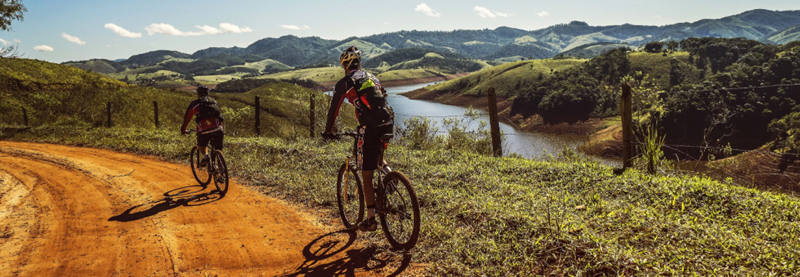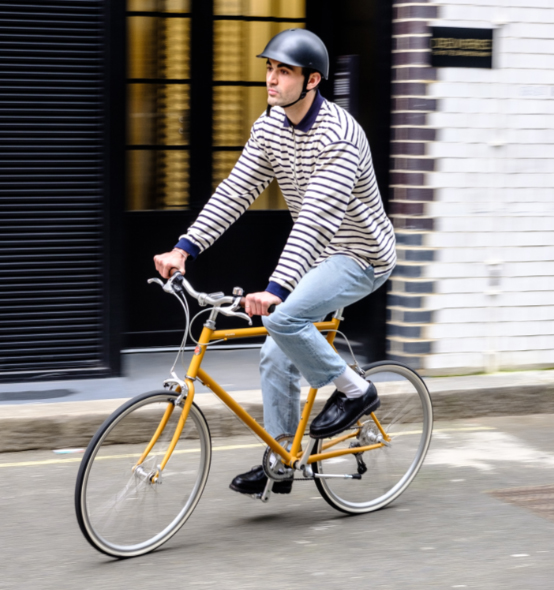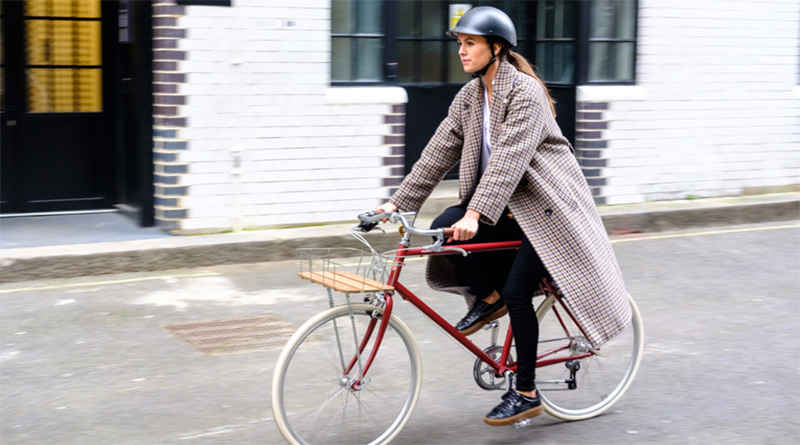HOW WILL CYCLING EVOLVE POST-LOCKDOWN
You can see it wherever you go – or simply when looking out of your window – cycling has enjoyed a massive resurgence and become more popular than ever during lockdown. People are dusting off old bikes to enjoy the outdoors when they are taking their daily exercise, families are cycling out together and friends are going for socially-distanced bike rides together.
And now, with more people returning to work, increasing numbers of people are planning to commute by bike. This is great to avoid using public transport, as advised, but it also spares using the car, saving both money and pollution. It’s also a great way to get exercise on a regular basis.
So, where does the resurgence of cycling go from here? How is cycling likely to evolve?

Is it a short-term fad?
I believe this new-found love of cycling will endure. Once people realise the benefits of cycling, they will be happy to carry on. For a start, if you’re cycling to work, you’re getting your daily exercise in the time when you would previously have been sat on a bus or a train. This, in turn, saves you time going to the gym in the evening, freeing up time for you to spend with your loved ones, which many of us have realised the importance of over the lockdown period.
And we know that exercise generally makes you feel good by raising endorphins but, when cycling, it really helps you unwind on your way home from work. Because you have to concentrate on the roads, you have to switch off from the niggles of your day. Thus, you can clear your head on your way home from the office and arrive home feeling fresher, happier and more relaxed.
Plus, people are happier in their cities, towns and rural routes, when cycling. As they move more slowly through their commute; with their eyes concentrating on the route and not a device or newspaper; they can learn more about the local area, spy local shops and cafes that they might like to visit or find a green spot that they might like to go to with family at the weekend. You can also actually see seasonal changes, appreciate the beauty of nature and – depending on your route – get some good old-fashioned fresh air, all of which are great for your mental health.
I also believe there will be a rise in e-bikes, meaning you don’t have to arrive at the office sweaty. Plus, e-bikes and e-scooters will come to be seen as an affordable commodity, when compared to the price of a travel card or a second car.

What will the new cycling age mean for cycling fashion?
There is a preconception about cyclists being Lycra-clad and having all the “right” gear but, as people have found when taking cycling up, you don’t need to invest in loads of stuff to get on your bike. You just need to get on it and ride it!
That said, I do think that, as people cycle more there will certainly be a move towards more natural fibres. For people commuting to work, this will help ensure that they don’t arrive at their workplace feeling – and looking – hot and sweaty. People will be far keener to wear cotton than polyester, for example. Not many bikes have chain guards, so you’ll need to make sure that you don’t wear trousers or skirts long and baggy enough to get caught in the chain, as that could cause a crash.
Being out in nature means that cyclists tend to have a connection to the environment (than they might be otherwise) and an interest in sustainability. Lockdown has meant that people have become accustomed to living in fewer outfits, and I think this will persist or, I suspect, the growth of buying less but better.
Certainly, already popular is wicking fabrics, which are breathable and help to wick away sweat. You may be surprised how much wicking fabric you already own. The chances are your trendy yoga gear is fine for getting on a bike with.
I would always go for comfort over fashion but, if you want to be a fashionable cyclist, there is plenty of great, stylish fashion-wear out there and I think as people get more used to cycling as a way of life, they will find their own cycling style. Also, when new cyclists realise how much money they are saving on car expenses or bus and train costs, they might start to invest those savings in specialist or stylish kit. Everyone should pick and choose what works for their cycling journey.
Scandi-style
Another misconception about cycling is that it’s all about speed, when you think of couriers in London going at full pelt, cutting in and out of the traffic or hordes of competitive cyclists on rural routes at the weekend, speeding along with the finish line and personal bests firmly in their minds.
But if we consider the Netherlands, for example, cycling is a much more relaxed pastime. They go at sensible speeds and enjoy their surroundings as they cycle, arriving at the destination without being out of breath, sweaty or exhausted.
Also, as we learn our routes and realise that they are probably much more direct than the road or tube routes we have been so accustomed to, we will find our journeys are not as long as we have thought they would be.
 So, I think we will become much more like the Scandinavians in our cycling. I also suspect our style will follow suit, away from stereotypical cycling clothes towards more stylish looks. Brands such as Dashel, Hill & Ellis and Finisterre will increasingly be seen.
So, I think we will become much more like the Scandinavians in our cycling. I also suspect our style will follow suit, away from stereotypical cycling clothes towards more stylish looks. Brands such as Dashel, Hill & Ellis and Finisterre will increasingly be seen.
What about safety?
It’s important to be safe, particularly in the winter months, and being as visible as possible to other road users is essential. But, again, this does not have to cost a fortune. Cyclists should ensure that they are legal and as safe as they can be while sticking within their budgets.
For example, you must have lights on your bike, this is a legal requirement. However, you could also add a light to your helmet to make you more visible to motorists, particularly drivers of 4x4s which are that much higher up. Conversely, you don’t have to be clad head-to-foot in day-glow to be seen – a high-visibility sash that you can wear over your coat, and costs as little as around £8.00, will still ensure you are seen.
Although helmets are not legally required, they really are extremely important for safety. If you aren’t a fan of the traditional helmet shapes, there are some nice stylish ones out there these days!
New cyclists probably haven’t realised yet that there are more routes than they would have imagined where they can cycle away from cars. There are cycle lanes to help keep you safe and there will be more as, post-Covid, the government is planning to invest in further infrastructure.
Will the cycling love affair end with summer?
I can see that the idea of cycling in the rain, cold and other British winter weather variables does not seem as appealing as summer cycling. However, it’s as simple as putting on over-trousers and a raincoat, or a fashion-forward poncho if it isn’t too windy. If you’re commuting by public transport, you’ll get wet at some point anyway, especially if you are cueing outside tube stations to observe social distancing. Even walking from the car park to your office is unlikely to find you bone dry!
Of course, folding bikes, such as the Brompton, are popular for many reasons. For example, if you ride it into work and the weather deteriorates to the point where you really can’t face riding home, you can fold it up and carry it onto the bus, train or taxi.
On the bike, spray will be an issue for both comfort and safety. Another great reason to check out what the cycle network has to offer – check out osmaps.ordnancesurvey.co.uk/ncn for example. This will help you choose routes away from heavy traffic and spray.
In London, TfL is expanding the network with the aim of ensuring that more and more Londoners are within reach of cycling routes, meaning you can cycle without having buses spraying puddle water over you! Unfortunately, Kensington & Chelsea have previously blocked cycling schemes, which causes an issue, but if the boroughs can be aligned, cycling will be increasingly safer and more pleasant.
In fact, once you have started winter cycling, you’ll realise very quickly that our winters aren’t really that extreme. I mean, we’re not in Canada or New York! The exercise itself keeps you warm, plus you have the added bonus that, with all those extra calories you’re burning, you can totally justify some good, stodgy food to give you warmth and energy for your ride.
If you are one of the new or returning cyclist, I have one thing to say: Enjoy!
 ABOUT THE AUTHOR
ABOUT THE AUTHOR
Catherine Bedford is Founder of Dashel. Dashel offers a range of slim, ventilated, lightweight cycle helmets manufactured in the UK. With a distinctive urban feel Dashel Helmets are made from recyclable materials – ensuring that they are low impact at the point of manufacture and produce very little waste at the end of life. The new Re-Cycle helmet will be ground down into new helmets at the UK factory when it is finished with. The helmets are portable, sold packaged in a handy rucksack that means there is no superfluous packaging. They come in an array of classic colours. Choose from black, blue, sage green and red. Dashel helmets are £79 and available from all good cycle shops and online at Dashel.co.uk
Dashel Social Media:
Instagram
Twitter
Facebook
Pinterest
LinkedIn

